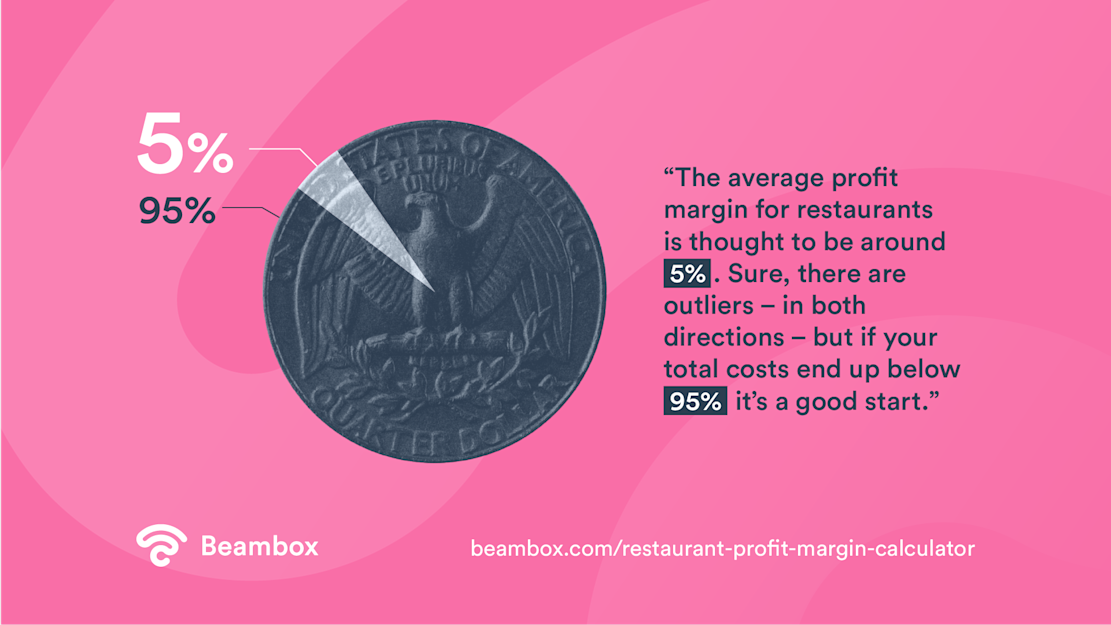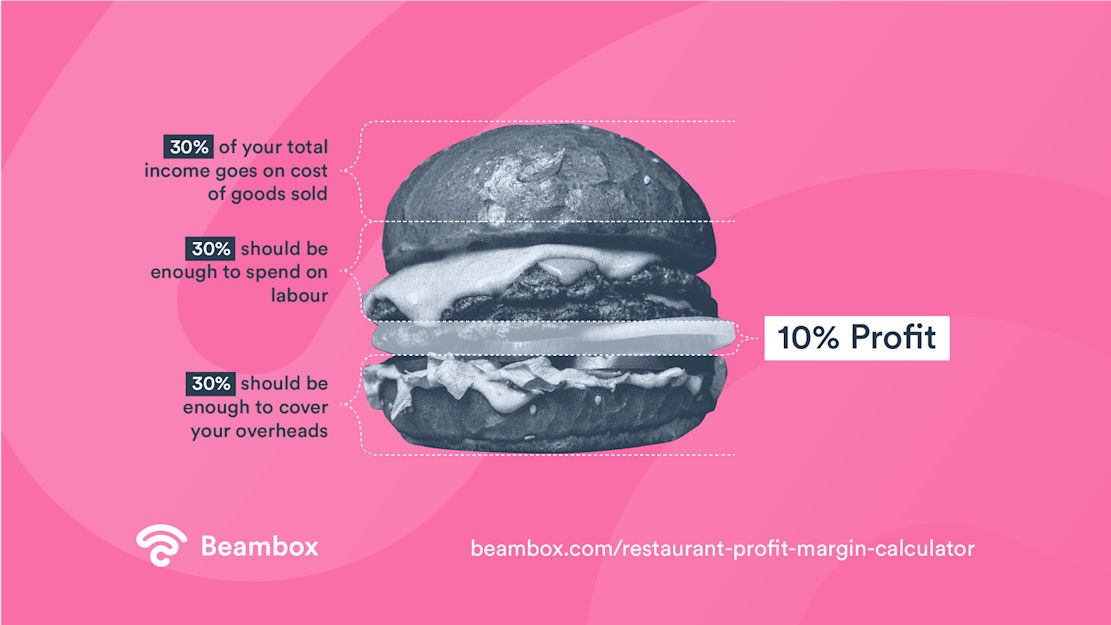Running a successful restaurant has never really been a walk in the park at the best of times.
And now, with ever-tightening margins, more demanding customers than ever before and ‘the big C’ still wreaking havoc, attempting to make money from your food operation can feel like going into battle.
As always, it comes down to your restaurant’s profitability. It’s why learning how to calculate your restaurant margins is such an important part of running this kind of business.
Your goal is to make a profit. And it all starts here.
Things are looking up
The world needs passionate restaurateurs to keep spirits up and taste buds entertained and, despite the increasing challenges, more of us than ever are choosing to leave the cooking to the professionals, either by ordering in or going out for the night.
In fact, many parts of the hospitality industry that were hit hardest during the pandemic have actually started to display an impressive resurgence, with cheerful predictions of growth for the next few years.
It’s actually quite a good time to run a restaurant!
It’s all about the margins
Wherever you are on your journey, there’s something you should never lose sight of.
With so many different things to attend to – menus, housekeeping, compliance, staffing, marketing, the coffee machine that just started making weird noises – it’s easy to forget the cornerstone around which the whole business revolves: profit.
Sure, you may have sketched out a decent set of costings at some point, but small changes – to suppliers, recipes and pricing – can quickly lead to you drifting away from your margins to the point when, even on really good days, you might barely be breaking even.
Yes, you have time
Think you don’t have the time to revisit every dish and see how much money you make on it?
Think again.
It’s not the hassle you think it is. You can take a lot of the faff out of it with our simple restaurant profit margin calculator. Download it today to find out how easy it should be to get a handle on how much money your business is actually making.
Or, you could set up your own, beautiful spreadsheet to do it all for you – just don’t spend all afternoon choosing a font and then have to dash off when it’s time for service (that calculator suddenly sounds like a good idea, doesn’t it?).
It’s tight, but you can do it
The average profit margin for restaurants is thought to be around 5%. Sure, there are outliers – in both directions – but if your total costs end up below 95% it’s a good start.

To the uninitiated that may seem rather tight, but that’s just how the restaurant industry – and most of the food sector – works. Money is made by maximising sales and chiselling away at your operation until efficiencies start nudging that margin up.
A good rule of thumb to get you started is the 30-30-30-10 rule.
Around 30% of your total income goes on cost of goods sold
Put simply, that’s all the ingredients you buy in (plus things like condiments, napkins and takeaway containers). Basically, it’s your weekly orders and all the extras you have to pop out and buy at the last minute on a Wednesday lunchtime.
If you’re running a new operation, the amount you spend from day to day is unlikely to align with what you sketched out when designing the menu.
Purchases made throughout the week which aren’t part of your weekly order might force your planned gross profit to dip without you realising.
30% should be enough to spend on labour
Your profits fluctuate depending on the ebb and flow of a week’s service, plus special events and holidays. Your labour costs should more or less follow the same path.
Even though labour costs won’t stay the same from week to week, there’s usually a degree of predictability. And it’s something that’s easy to track, because you’ll naturally record all the hours worked.
30% should be enough to cover your overheads
Think rent, insurance, tax, banking and credit card fees, software, utility bills and marketing. Most of these are fixed costs that are paid out regularly.
Marketing expenses may be more sporadic. For all occasional costs, look at what you’ve spent over the year and divide it by months or weeks to get a decent average to go on.
Some costs are easier to keep track of than others. Monthly rent, insurance and utility payments are either fixed or at least fairly consistent. If they’re high, that’s not a good thing – they aren’t something you can change quickly – however, renegotiating rent deals and terms and changing energy suppliers is something to think about in the longer term.
Try to aim for 10% left as profit
This is more achievable in some categories than others. Full-service restaurants generally see something closer to 4%; fast food outlets can hit 8% or 9%, while trucks and popups can sometimes see significantly more.

Keep the faith
If you’re a new restaurant, it’s always worth remembering that your profits for the first few years aren’t necessarily representative of what you’ll go on to make in the long term.
It takes a while for you to calibrate your prices, settle on a menu which only features popular and profitable items, and work out so many other details that end up becoming standard.
You’re likely to spend a great deal (overspend?) on marketing in the first year, too.
Making a loss in year one isn’t unlikely but it mustn’t put you off. However much you’re making, things are only likely to improve if you continue to watch your margins like a hawk.
Restaurants work
You’ll often hear that restaurants are likely to go out of business in the first year of trading. But in 2014, two researchers revealed that it’s not the case.
Restaurants are no more susceptible than any other new business. In fact, the research found that new estate agents, management consultancies and locksmith services – among others – were more precarious than restaurants.
Statistics don’t tell the whole story. Your business is unique to you and it may just have exactly what your audience needs. This is why you owe it to your customers to be across all the financials of your business.
If the numbers add up, and are accurate, you could be on to a winner.
Get Started With Free WiFi Marketing
Beambox helps businesses like yours grow with data capture, marketing automation and reputation management.
Sign up for 30 days free